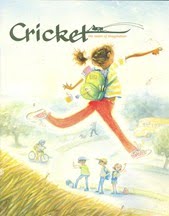Writing Children's Short Stories Dos and Don'ts Part 2
 It's time for part two of "Writing Short Stories Dos and Don'ts." If you missed part one, you can find it here.
It's time for part two of "Writing Short Stories Dos and Don'ts." If you missed part one, you can find it here.Now onto part deux:
Don’t use words like “she shouted” or “he exclaimed” or “she questioned” after dialogue. Don’t be afraid to repeat the word “said.” It is the best dialogue tag. Instead of having to use “said” all the time, you can also use action or setting details as dialogue tags. For example:
“When are you going to let me come into your clubhouse?” Martha stood with her nose at the door, trying to peek through a crack in the wood.
Henry sat in the middle of his clubhouse and thought about it for almost a whole second before he said, “Never.”
She stomped her foot and screamed. “I’ll just stand out here and scream until you let me in!”
Before Henry answered her, he put earplugs in his ears. “Okay.” He hummed and went back to carving his statue.
Do use humor in children’s stories. Magazine editors are always looking for humorous stories. They get tons of stories on divorce and other “serious” kid issues. These are important; but if you are a new author, try something that editors always need. (Usually, editors are looking for stories that appeal to boys, too.)
Don’t write a story for a magazine if you have never seen the magazine. Do read back issues or sample stories on a website before you start writing for the magazine. Try to find out what subjects their recent stories have covered and send something different.
Do send seasonal material at least six months in advance. Some magazines want it even further in advance. Also, check websites and magazine guidelines for themes. Brainstorm ideas to fit the themes, and think outside the box.
Don’t give up if you get one or two rejections. Look for new markets—online magazines or children’s newsletters that would be interested in publishing your fiction.
Do use Times New Roman as your font. Also, use 12 pt. font and double-space your fiction stories. Put a heading on each page—page number, your last name, and part of the title.
I hope these few dos and don'ts help everyone on their road to publication success with writing children's short stories!
Happy Writing!
Margo Dill
https://margodill.com/blog/
Labels: children writers, children's fiction, Margo Dill, Writing for magazines











